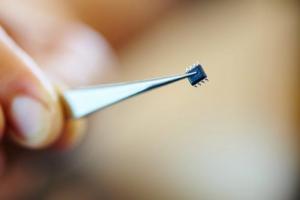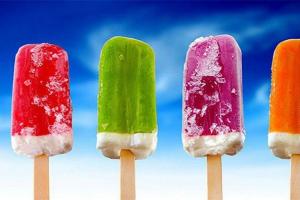Many people know that strawberries should be fed three times a year, including during flowering. This period is the most significant in the life of the plant, since at this time the fruits are set and the final formation of the crop occurs. By following the basic rules, advice and recommendations of experts, you can get a good harvest of berries.

Why do you need feeding?
During the period of fruit set and during flowering, when budding occurs, you should take special care of strawberry bushes. Some gardeners believe that during the active flowering phase there is no need to feed or even touch the fruit ovaries, but all attention should be switched to watering, loosening, weeding and trimming the mustache. Therefore, fertilizers are applied only in early spring and in the autumn.
But the plant needs nutrition throughout the growing season. Strawberry is on permanent place, soil reserves of nutrients are gradually depleted. For this reason, it is recommended to renew and feed the berry bushes on the ridge every two years. During the period when strawberries bloom, they especially need additional substances and care. The quality of the harvest and the richness of the fruit depend on this, which is especially important for preserving the varietal qualities of this plant crop.
Berry bushes should be fed several times: in the spring during the budding phase, during the ovary period of fruit buds, in the active flowering phase and in the summer - before and after harvesting. Moreover, both newly planted and already fruit-bearing bushes. All stages are interconnected: in the period after winter frosts, the plant needs to recover, form and preserve fruit and flower primordia, and also distribute the necessary substances for fruit ripening.
In order to feed the plant thoroughly and approach this process with full responsibility, you need to figure out the best way to do this.

What is the best way to fertilize?
Strawberries bloom in spring, in May. In northern zones, the flowering period may last until early June. Fertilizing should be done using various types fertilizers
There are several types of fertilizers: mineral-based, organic and mixed, as well as biostimulants and hormones. Minerals include potassium, nitrogen, phosphorus and magnesium. All these substances are involved in the formation of buds, the formation of ovaries and fruits. The classic fertilizer for this period is nitroammophoska.

Complex compounds contain everything necessary elements for feeding strawberry bushes. The correct balance of phosphorus, nitrogen and potassium contributes to the complete distribution of nutrients. They are brought in, just like mineral compounds, directly into the soil, under abundant watering.
The method of feeding berry bushes can be done based on the quality indicators and characteristics of the soil. Often, gardeners use ready-made fertilizers and compounds on the beds. They are balanced in composition and are well absorbed by the plant through the soil. But you can fertilize them with folk remedies.

Application of mineral fertilizers to the soil during flowering of berry bushes - important stage care and crop production.
There is no need to fear that the fruits will become saturated with chemicals and suffer as a result. On the contrary, timely watering with nutrient compositions normalizes the metabolism of the berry crop.
The choice of feeding should also be made taking into account the need for useful elements during this period, which must include potassium. It is known to be found in wood ash and bird droppings. Therefore, it is necessary to feed with complex formulations with the addition of these products.
Regular yeast and boric acid are in demand. Boron increases the quantitative composition of the ovary, improves taste qualities fruits, making them sugary and large. Acid can be applied to the root zone in the usual way, or you can spray flowering strawberry bushes using a spray bottle.
Yeast has been used for a long time during the flowering period of strawberries. The vitamins and minerals included in their composition provide nutrition to the bushes, which, in turn, has a positive effect on the quality of the berries: they become sweet and juicy, and significantly increase in weight. To use, prepare a starter: take one packet of yeast per five liters of water, add two tablespoons of sugar and leave for a while. Then the composition is diluted at the rate of one part starter to two parts water. On average, 5 liters of yeast fertilizer will be needed to water 10 bushes.

The bread composition is an alternative to the yeast composition. This method is very convenient in terms of savings. Housewives can dry the pieces of bread, and soak the finished crackers in water and leave them to ferment properly. This process lasts on average a week. The fermented composition is squeezed out, thrown away crumbly, and the liquid is diluted in a ratio of 1 to 10 and the bushes are poured at the root. One plant will need half a liter of bread fertilizer.

During the flowering period, strawberries are treated with an iodine compound to prevent dangerous diseases. Prepare the composition: copper sulfate and boric acid, half a teaspoon per bucket of water, plus 30 drops of iodine. This composition can be equally effectively watered at the roots or sprayed on plants.
Saltpeter is another means for fertilizing strawberries during flowering and the appearance of the ovary. The composition is prepared simply: add a teaspoon of potassium nitrate to a bucket of water, stir thoroughly and pour half a liter onto one bush.

Being a biostimulant, the drug increases and accelerates the formation of a healthy ovary. During the flowering period, the application of the drug protects the plant from the effects of unfavorable factors, such as sudden changes in temperature and humidity. The active substance of the drug restores the balance of nutrients, preventing their loss. Before irrigation, prepare a solution of one gram of the drug per liter of water. Spray the bushes at the very beginning of the formation of flower stalks.
Ash from trees coniferous species is an excellent means of feeding garden strawberries. In the absence of conifers, any other type of wood will do. The main thing is to dissolve it in a bucket and add it to the soil only in diluted form. Take a liter of moderately warm water per glass of the composition. The steamed mixture is diluted with water several times before watering.
One more effective means Fertilizing strawberry bushes is rotted cow manure. An infusion is prepared for use: take a bucket of water for two liters of mullein and leave for a day. Before use, you can add a pinch of potassium humate to the composition. There is half a liter of this solution per strawberry bush.
When adding organic fertilizers, avoid getting them on leaves and flowers.

Fertilizer application methods
There are two types of feeding - root and foliar (foliar). Before carrying out the procedure, a number of preparatory measures should be carried out, the main ones of which are freeing the root system of the plant from debris, branches and mulch, removing weeds and loosening the root zone of the plant. This will provide fresh air access to his vital organs and create favorable conditions for fruit formation.
Root timely spraying of the crown of the bush with fungicides and insecticides will preserve the health of the plant and protect it from insects, fungi and pathogenic bacteria.

Root
Root feeding during strawberry flowering is convenient and in the usual way application of fertilizers. Useful material are well absorbed through the root system of the plant, spreading throughout all its branches and parts. Fertilizers must be applied with caution, strictly as directed - at the root, otherwise you can burn the young strawberry leaves.
There are uniform rules and sequence for applying fertilizing and fertilizers:
- mineral compositions are applied only once during the period of bud binding;
- chemicals are not used at this time;
- they focus on the addition of potassium compounds, since potassium contributes to the formation of the crop;
- with the beginning of the appearance of inflorescences, they are fed with mullein, ash and potassium salt;
- as soon as the buds are formed, they switch to applying nitrate.

Foliar
This method involves irrigating strawberry bushes with nutritional compounds during flowering. You can buy them ready-made, or you can make them yourself. It is only important to adhere to the basic rules of foliar feeding:
- Irrigation with compounds should be carried out in calm weather, when there is no rain or wind;
- during the latter process, direct sunlight should be avoided;
- irrigate the leaves of the strawberry bush, focusing on their lower part, since this is where the greatest absorption of nutrients takes place;
- For spraying, special sprayers are used - manual or mechanical, and safety measures are also taken, which include wearing protective masks and gloves.

For irrigation, preparations and compositions “Rubin”, “Agros”, “Gera” and others are used, strictly following the instructions and rules of use.
- Immunostimulator "Rubin 7" contains the necessary set of useful elements, promotes the formation of the ovary, ensures the growth and development of strawberries, and also protects them from premature wilting and diseases. The complex is designed for three applications. The composition is placed in a spray bottle, first diluting it in three liters of water. The prepared mixture must be used immediately, as it has a short shelf life. Repeated irrigation should be carried out after about two weeks.

- Zinc sulfate (white sulfate) Before spraying, dilute in water at the rate of several grams of the drug per bucket of water. This will promote the formation of a healthy ovary.
- For foliar feeding potassium nitrate two small spoons of the composition are dissolved in 10 liters of water. Berry bushes are treated with the prepared solution.
- A solution of boric acid and yeast, diluting the indicated compositions in the same proportions as for root dressings. This fertilizing multiplies the inflorescences and increases the quantitative composition of the crop.
- Infusion of young nettle leaves. To do this, pour finely chopped greens hot water(not with boiling water), leave for 24 hours and then irrigate the strawberry bushes with a diluted (1:10) mixture.

- Whey. It not only nourishes the plant, but also provides an acidic film that can protect the plant from aphids and insects. Before irrigation, prepare an aqueous solution at a one-to-one ratio.
Often, feeding alone is not enough, so experts recommend using complex formulations. For example, irrigate the bushes with compositions of several components: potassium permanganate, potassium nitrate and boric acid in equal proportions, approximately one gram per 10 liters of water. This healing solution is supplemented with a packet of any fertilizer for this type of plant.

In order for strawberries to remain healthy throughout the growing season and produce a good harvest, Agricultural specialists advise adhering to the basic rules during the flowering period.
- Preference should be given to natural, environmentally friendly compositions with the addition of organic matter: manure, ash and mullein.

- It is best to develop and use any one integrated approach applicable to a given type of soil, taking into account the varietal characteristics of plants. Using multiple fertilizers in different combinations can do more harm than good.
- When feeding, it is important to take into account that strawberries love organic matter most of all, but only in moderation.
- Berry bushes should be fed on moist soil for complete distribution of the nutritional composition. The best time for this is the period after precipitation.
- The bushes should not be touched in the heat, otherwise the leaves may burn in the sun. For this reason best time for this purpose – early morning or evening.

- You need to follow the instructions and prepare compositions for feeding during the flowering period strictly according to the recipe. Please note that the data is given taking into account the general characteristics of loamy soils. Therefore, before using fertilizers, study the composition of the soil in your garden plot.
- It is not recommended to carry out intensive fertilizing during the formation of flower stalks, otherwise you can overdo it and lose part of the harvest.
- Before applying fertilizer to the soil, you should water well and loosen the soil in the root zone, as well as throughout the entire ridge where the berries are planted.
- During flowering, strawberries must be pruned, removing excess tendrils and dry leaves, and also limiting their contact with the ground. It is best to line the root zone with a layer of mulch.
Loosening the soil, timely watering and irrigation are the key to proper plant care and ensure good flowering and a plentiful harvest of berries.


Among other things, It is necessary to remove the very first strawberry flower stalks. This procedure is necessary so that subsequent inflorescences become larger than their predecessors.
An important point is watering flowering bushes. The superficial root system is unable to cope with the plant’s nutrition, so the bushes are watered moderately, avoiding excess moisture. In hot weather, it is enough to water the strawberries once every three days. During the rainy season, watering is carried out much less frequently. Water the blooming berry strictly under the bush, avoiding contact with the flowers and ovaries. You also need to ensure that the roots of the plant remain under the cover of the soil. After irrigation, it is best to loosen the soil around the bush to improve air exchange and normalize root respiration.
In the process of caring for the plant during flowering and ovary formation, pollination methods are also used. Insufficient pollination leads to degeneration of flower segments followed by falling off. Therefore, to avoid these consequences, you need to help the plant by pollinating the flowers using the brush method. To do this, take a soft brush and transfer pollen from flower to flower. It is preferable to do the procedure in the afternoon.

For large areas, special fans are used. Natural honey is used for natural pollination. It is known that bees are the best pollinators of all insects. To attract them, dissolve a large spoonful of honey in a liter of water. The resulting mixture is used to irrigate flowering strawberry bushes. An additional effect of self-pollination can be achieved by growing several different varieties strawberry bushes.

Carrying out proper care and fertilizing berry bushes during the flowering period can significantly increase the yield and quality of berries. The time spent will pay off in spades, and beautiful, aromatic ripe strawberries will decorate the beds on your site.
To learn how to feed strawberries during flowering, see the following video.
The process of growing strawberries is simple, although very responsible. One of the most important conditions For the full growth and development of berry bushes, regular fertilizing during flowering remains. Here they can use both ready-made purchased drugs and those obtained at home.
What to water and feed
During flowering, strawberries need root feeding. Organic and mineral formulations will be very effective.
Mineral
For root feeding of strawberries during their flowering, you should use the following effective recipes:
- Take 20 g of urea, 200 g of ash, a pinch of manganese and boric acid. Mix all these components in 10 liters of water. Water with the resulting solution at the root. Thanks to this composition, you can simultaneously disinfect and saturate strawberry roots with useful components. But is it possible to feed with urea, and how to do it correctly?
Urea for strawberries
- Take 15 liters of water, add 40 g of potassium, 60 g .
One bush will require 0.5 liters of solution.

Nitrophoska
- To perform foliar feeding, take 1 liter of water, add a pinch of potassium sulfate, manganese, boric acid. Treat the strawberry leaves with the resulting mixture, paying close attention to their lower part. But how boric acid is used for strawberries in the spring is described in great detail in this

Potassium sulfate
- To treat the aboveground part of the plant, it is worth using a 0.02% solution of zinc sulfate.
- Take 10 liters of water and dissolve 10 g of boric acid there. Use the solution to water berry bushes.
- Dissolve 40 ml of ammonia in 10 liters of water. Use the resulting solution for watering under the roots. Mulch the soil under the bushes using red clover. Thanks to such actions, it is possible to prevent the growth of succulent grass, and also create reliable protection strawberries from pests such as the cockchafer and weevil. It will also be useful to know how

Ammonia for feeding
- To enhance the development of ovaries, it is worth fertilizing the bushes with potassium compounds. To do this, take 200 g of ash and scatter it over the surface of the soil. This amount is enough to process 1 m2.
In the video - how to feed strawberries during flowering:
Ready-made fertilizers
To fertilize strawberries during flowering, you can use ready-made preparations. Their range today is large, but it is worth highlighting only the most effective:

Fertilizers, presented in the form of granules, should be diluted in water, following the instructions. A 1 kg bag will be enough to process 40 m2 of plantation. To treat remontant varieties of strawberries, the same preparations are used as for ordinary ones. But only the frequency of fertilizing increases by 2 times.
Home Remedies
When caring for strawberries during flowering, some gardeners use homemade natural remedies. The following recipes remain effective:

What to spray
During flowering of strawberries, you can not only use root fertilizers, but also spray the berry bushes. Useful components are absorbed by the leaf mass, and especially its lower part. This point should be taken into account when processing plants. During flowering, use the following recipes:
- Ready-made mineral compositions. The most effective ones include Ruby, Hera, Agros. To prepare the solution, you must use the instructions.

- Zinc sulfate. It is necessary to use 0.02% for spraying bushes.
- Potassium nitrate. You need to take 10 g of the drug and dissolve it in 5 liters of water.
- Yeast. Take them in an amount of 1 kg and dissolve in 5 liters warm water. Let it sit for a day and then use it to process the above-ground parts of strawberries.
- Nettle infusion. Finely chop the grass, place it in a bucket and add hot water. Leave for 24 hours, and then dilute the prepared solution with water in a ratio of 1:10.

Nettle infusion
- Boric acid. Take 10 liters of water, add a pinch of the drug. Mix the mixture and treat the bushes.
- Dairy products. Thanks to them, it is possible not only to feed the bushes, but also to acidify the soil. This is very important for those areas where the soil is acidified. This kind of feeding will also perfectly protect the bushes from ticks and aphids. It is necessary to take yogurt and water in equal proportions and treat the bushes. But there is a downside to this recipe. It is not able to provide adequate nutrition to plants during the flowering period. So you will have to add treatment with nettle infusion.
- For this composition you need to take 10 liters of water, add 2 g of potassium sulfate and potassium permanganate, 1 g of boric acid and a bag of any complex fertilizer for garden strawberries.

Potassium permanganate
Feeding strawberries during their flowering allows you to saturate them with useful components and improve the formation of ovaries. By regularly using foliar or root fertilizing, it is possible to increase the productivity and resistance of plants to various pests and diseases. But you shouldn’t overdo it either. An excess of fertilizers can have a detrimental effect on the development of bushes and fruiting.
Strawberry is the queen among garden berries. It is beautiful in all respects - juicy tasty pulp, unique aroma, bright color. This is an undemanding culture; you just need to know the basic rules of care. Fertilizing during flowering and fruiting is the basis for obtaining an abundant and high-quality strawberry harvest.
Strawberries are planted in late summer in August or early September. When planted at this time, the rosettes have a chance to take root in the ground, adapt and overwinter well. Fertilizers are added to the ground before planting - rotted manure, mullein, wood ash.
Mineral fertilizer is added directly to the strawberry holes. The composition must contain phosphorus (2 parts), potassium (1 part), urea (1 part). This feeding will stimulate the growth of the root system and enable the seedling to lay flower buds for the next year. After laying the fertilizer, spill the soil, and the next day you can plant strawberries.
At this stage the care is complete.
Rules for caring for blooming strawberries
In the spring after planting, you should evaluate how well the strawberries overwintered. Strawberries take root well and usually a small portion of seedlings fall out.
At the moment when new leaves begin to grow at the rosette, the bed is cleared of last year’s debris, the tendrils are torn off and mulched. The mustache must be plucked off during the entire growing season, otherwise, instead of the abundant formation of flower stalks and berries, a new rosette will grow.
During the formation of flower stalks and the flowering itself, the plant consumes a huge amount of nutrients. The fertilizer that was added during planting was used to form a powerful root system and now the strawberries need regular feeding. When choosing what to fertilize strawberries with, give preference to proven products.
Fertilizers for strawberries during flowering
Flowering is the most important stage for a gardener. It is worth feeding the strawberries correctly and on time during flowering, and they will reward you with a bountiful harvest.
When applying fertilizer, the yield increases on average from 40% to 70%.
The first fertilizing of strawberries is carried out when they have buds or bloomed. Top dressings are divided into two categories: root and foliar.
Organic fertilizers
Fertilizer is applied at the root. Methods for preparing fertilizers that stimulate budding abundant flowering and a bountiful harvest during fruiting:
- Mullein infusion is an organic, completely ecological supplement that contains all useful microelements. Infuse two glasses of mullein in a bucket of water, add two tablespoons of urea, feed at the rate of 0.5 liters of infusion per bush;
- Chicken droppings. Bird droppings is one of the best fertilizers stimulating flowering, budding and fruiting. One liter of chicken manure is poured into a bucket of water and allowed to brew for 6 days. Then dilute this infusion again immediately before feeding (1 liter of infusion per bucket of water). This solution is used to feed strawberries at the rate of 0.5 liters per bush. Applying dry chicken manure under bushes is strictly contraindicated due to its high urea content; it can burn the root system;
- Wood ash contains a large number of potassium and other trace elements and is good fertilizer. To add wood ash, you can use two methods - simply pour it under the bush, lightly embedding it in the ground, or dilute an infusion with which to water the bushes. For one 10 liter bucket of water you need to take 1 cup of wood ash. Water at the rate of 0.5-1 liter per bush;
- Yeast supplement - purchased at Lately Popular among gardeners as a fertilizer for strawberries. I would like to immediately say that it does not replace fertilizing with organo-mineral complexes, but is rather a stimulator of the immune system, the development of the root system and the above-ground part of the rosette. Any yeast (fresh or dry) is diluted at the rate of 10 grams per liter;
- At the stage of bud formation, you can carry out additional foliar feeding with the Baikal EM preparation. This is a preparation containing a culture of living bacteria that promote regeneration, improve immunity, restore soil and fix nitrogen. During foliar treatment, “Baikal” actively stimulates budding and flowering. The sockets are treated with a solution diluted 1 to 1000, which should stand for several days.
When choosing fertilizer for strawberries during flowering, gardeners and gardeners give priority to organic fertilizers. They are better absorbed by the plant, do not accumulate in various parts, and are best choice for environmentally friendly gardening and gardening.
Inorganic fertilizers
Inorganic fertilizers include a complex of mineral fertilizers that are applied at the root or along the leaf to cause rosette growth and bud growth.
- Potassium nitrate - improves the process of fruit formation and their quality. About two teaspoons of fertilizer are diluted per bucket of water. Water at the root or along the leaf.
- Foliar feeding of strawberries with zinc sulfate in a proportion of 2 grams per 10 liters of water also stimulates the active growth of buds;
- Foliar spraying with boric acid will increase the number of buds several times. For 10 liters of water you need only 1/3 teaspoon of boric acid;
- Urea - improves the process of formation of green mass, which is necessary for good growth and flowering. Water is diluted in one bucket Matchbox urea, water at the rate of 0.5-1 liter per bush.
- Specialized complex formulations that can be bought in the store. They are released separately for the flowering period. Diluted according to instructions. They can be used for both foliar and root feeding.
I would like to remind you that from the moment the bud blooms until the berries ripen, an average of four weeks pass. Fertilizing with minerals is not organic fertilizers During the flowering period, it is better to give preference to foliar feeding. They are better absorbed, used by the plant in full, and are not stored as reserves in berries.

How to fertilize strawberries during fruiting
Most gardeners and gardeners try to plant several varieties of strawberries in order to stretch fruiting for as long as possible. long term. Therefore, the first massive harvest wave is usually followed by a second and third harvest. During fruiting, you can feed the strawberries again, this will give the plant the opportunity to form the same large berries as during the first harvest.
It must be remembered that during fruiting, strawberries are fed exclusively with organic fertilizers, which will not enter the berries in the form of nitrates. This can be an infusion of mullein, ash, chicken droppings, or an infusion of humus (a bucket of humus on a barrel of water).
General rules for applying fertilizers
- Before fertilizing and even planting strawberries, you should at least roughly study the soil on the site. What is she like? Dense clay or loose sandy? Determine the acidity of the soil. Perhaps the soil reaction in the area is acidic, and by applying nitrogen fertilizers you will aggravate the problem;
- All fertilizers, especially inorganic ones, must be applied to moist soil, otherwise burns of the root system are possible, even at low concentrations of the substance;
- It is better to apply fertilizers in warm, but not hot weather; In such weather, fertilizer is better absorbed. It is best to apply foliar feeding on a cloudy, quiet day, or after 5 pm. At this time, the likelihood of sunburn of leaves decreases;
- If you mulch your strawberries with humus, then the need for fertilizer is significantly reduced;
- Organic fertilizers are a priority form for growing an environmentally friendly product. Use organic matter during flowering and fruiting, and inorganic matter during planting and preparation for wintering.
Wood ash is an excellent fertilizer for many garden plants. Strawberries are no exception in this regard. This natural feeding is especially valuable during the period of flowering, berry setting and fruiting.
How to apply wood ash to strawberries
By its nature, ash is a calcareous potassium-phosphorus fertilizer with a large amount of microelements. If nitrogen is needed by plants, first of all, during the active growth of green mass, then potassium and phosphorus are needed at the time of fruit formation.
Before the next watering or rain, small handfuls of crushed dry wood ash are added under the strawberry bushes. You can use an ash solution (1 glass of ash per 1 liter hot water, infuse for 1 day, then the composition is diluted with 9 liters clean water). For 1 m2 of strawberry bed, about 1 liter of ash solution should be consumed.
Advantages of the method
You will see the effect very soon:
- The berries will become larger, juicier and more aromatic. Their shelf life increases.
- The bushes will avoid fungal diseases (for example, gray mold), pest invasions (for example, weevil) and remain healthy.
- Plants treated in this way will tolerate the drought period more easily.
- Strawberry bushes fed with ash produce more flower stalks.
Some summer residents powder not only the surrounding area, but also the strawberries themselves, leaf by leaf, at the rate of 10-15 g per bush. With repeated applications, the concentration is reduced by 1.5-2 times. Don't be afraid that the bushes will look inconspicuous. The next rain or next watering will return the garden strawberries to their usual purity.
The ash should be wood ash, that is, from burned wood, and not from burning any garbage. Only in this case will it be able to compete even with manure in terms of its benefits to the plant.
In addition to effective feeding wood ash promotes deoxidation of the surrounding soil. For example, in our area the soil is acidic, as clearly evidenced by the horsetail growing on it.
To enjoy delicious juicy strawberries (garden strawberries), you need to know how to grow them correctly. Not every summer resident can boast of black soil, so the entire period of flowering and berry growth must be devoted to Special attention fertilizers. They are both organic (natural) and mineral ( chemical substances).
Which fertilizer is best for strawberries
Even the most professional gardeners cannot say what is better to choose for feeding fruits - natural ingredients or chemicals. Each of these types of fertilizers has its own pros and cons. The best solution would be to alternate feedings or use them in combination. Strawberries require all kinds of microelements (potassium salts, iron, magnesium, calcium) and vitamins for the full development of fruits. The entire range of nutrients is contained in both natural and mineral fertilizers.
Mineral fertilizer for strawberries
Garden strawberries simply need mineral fertilizer. It prevents all kinds of diseases of this crop, and also promotes the rapid growth of greenery. Complex fertilizers are the most popular among gardeners, as they can be found in the gardening departments of any hardware store. So, how to feed strawberries in the spring? good harvest:
- Azofoska (nitroammofoska). This is the most popular complex mineral fertilizer. The fertilizer contains equal parts of nitrogen, phosphorus, potassium (16% each) and a small admixture of sulfur. It is recommended to apply the drug directly into the soil before planting the plant.
- Stimovit for strawberries. A highly effective and reliable fertilizer consisting of vermicompost. Provides growth acceleration, protection against fungal or bacterial diseases, and pest control. Well suited for foliar feeding. The solution is made at a rate of one to forty (25 ml per liter of water).
- Agricola for berry crops. It is used to provide care for garden strawberries at all stages of growth (from spring to autumn). Treatment is carried out by watering or spraying. The solution is prepared simply: 25 grams of the product are mixed in 10 liters of water.

Fertilizing strawberries according to folk recipes
An important role in fertilizing garden remontant strawberries is played by organic fertilizers, which are elements of many folk recipes(mullein, chicken droppings, ash, yeast and others). All of them are harmless to the plant, so there is no need to worry about the quality of your harvest. Several recipes:
- Based on manure. Bird/animal droppings have been used as basic fertilizers since ancient times. Mullein (dried cow dung) is poured with water (ratio one to five), and placed in a warm place to infuse (ferment) for a week. Ultimately, the concentrate is diluted (proportion 1:10) and spread over damp soil (preferably a few hours after watering). Instead of manure, you can use chicken or pigeon droppings - the result will be no worse.
- Ash. This element is rich in potassium and phosphorus, therefore it often acts as a fertilizer for garden strawberries. To prepare the solution, you need to pour two tablespoons of ash with a liter of water and leave for one day. Garden strawberries need to be fertilized by watering. Feeding strawberries with ash during flowering will provide the gardener with an increase in yield.
- Yeast. Plant care can easily be provided by ordinary food product. A pack of this product (1 kg) must be diluted in five liters of water. To feed, the solution (0.5 liters) that has been left for 24 hours is mixed with liquid (10 liters). Apply twice per season.

How to feed strawberries from spring to autumn
Fertilizer use varies by different stages Total summer season(from May to September). In the spring, the first fertilizing is carried out (including before planting), which is aimed at activating the growth of shoots and leaves. In summer, strawberries are fertilized immediately after harvest, when the process of forming new buds and root systems begins. Winter feeding is needed so that the plant can prepare for the cold and survive until spring. Mineral fertilizers alternate with organic ones or are used together - it all depends on the wishes of the gardener.
How can you feed strawberries in spring?
This period is very important for the plant. You should seriously approach the issue of feeding strawberries before flowering, planting and fruiting. For the growth of leaves and buds, nitrogen is simply necessary, which should predominate in spring fertilizers. How to feed strawberries in the spring (use 0.5-1 liter of any product for each bush, depending on the size of the plant):
- ammonium sulfate (1 tbsp), mullein (2 cups) per 10 liters of liquid;
- nitroammophoska (1 tbsp) per 10 liters of water;
- mullein (one part), urea (two parts) to 10 parts water;

How to fertilize strawberries in summer
The second feeding of the plant is done closer to the last days of July, when the harvest has already been harvested. During this period, fruits especially need potassium and trace elements. Recipes (used in an amount of 0.5 liters of any fertilizer per plant):
- nitrophoska (two tablespoons), potassium sulfate (one teaspoon) per 12 liters of water;
- potassium nitrate (1 tbsp) per 5 liters of water;
- vermicompost (200 g) per 10 liters of water (infused for a day, then mixed with water in half).
Fertilizing strawberries in autumn
The last application is made at the end of September, and especially young plants before winter need such care. All funds can be used for transplantation garden strawberries to greenhouses. Recipes (process 250-500 ml per 1 sq.m.):
- mullein (one part), 0.5 cups of ash to 10 parts of water;
- mullein (one part), superphosphate (one tablespoon), ash (one glass) for 12 hours of water;
- nitroammophoska (150 g), potassium sulfate (200 g), ash (one glass) per 5 liters of water.
Video: feeding strawberries in early spring








